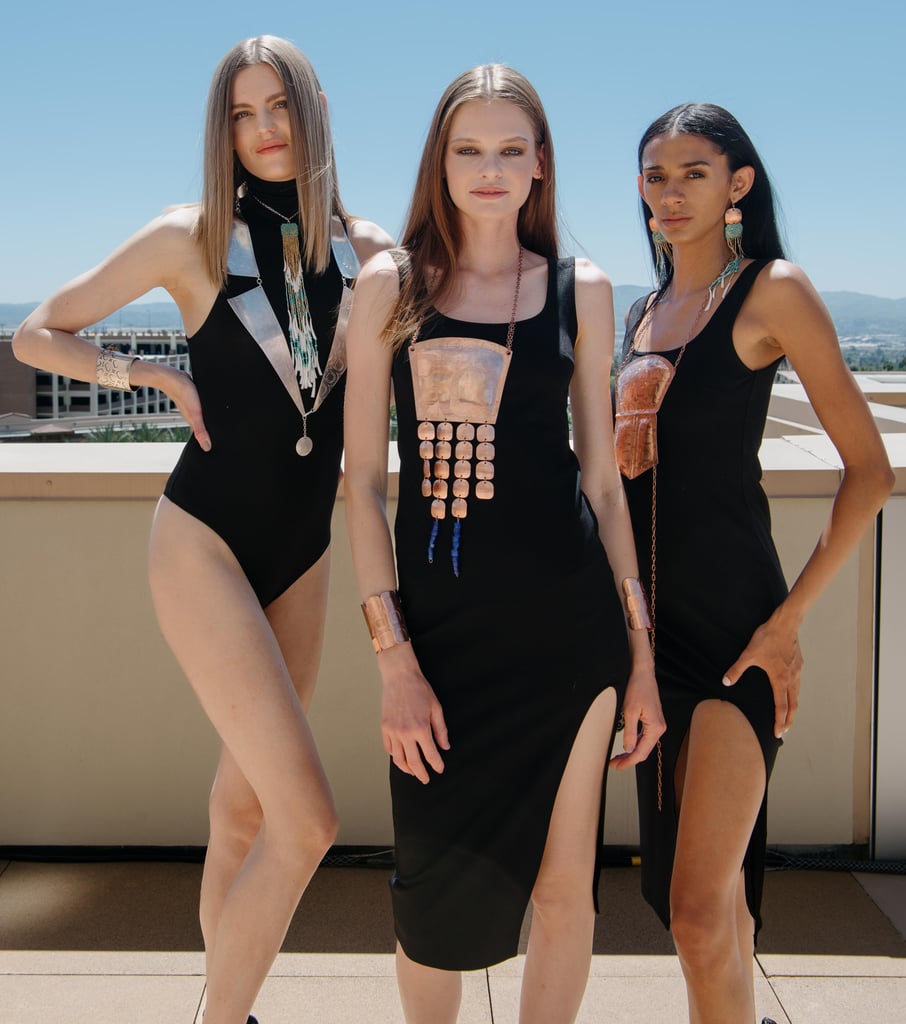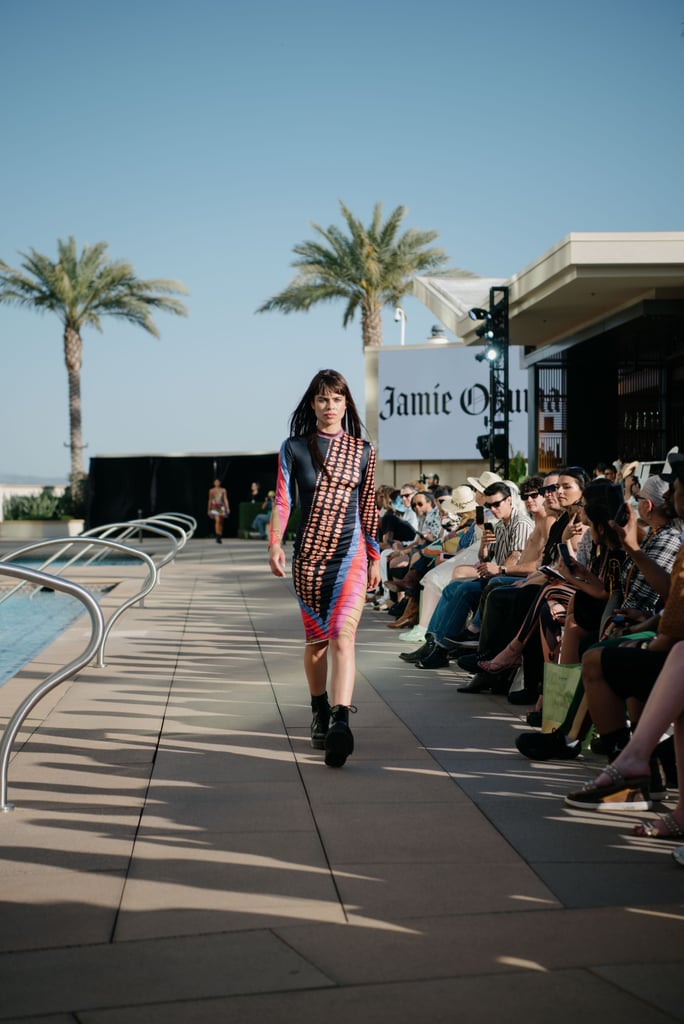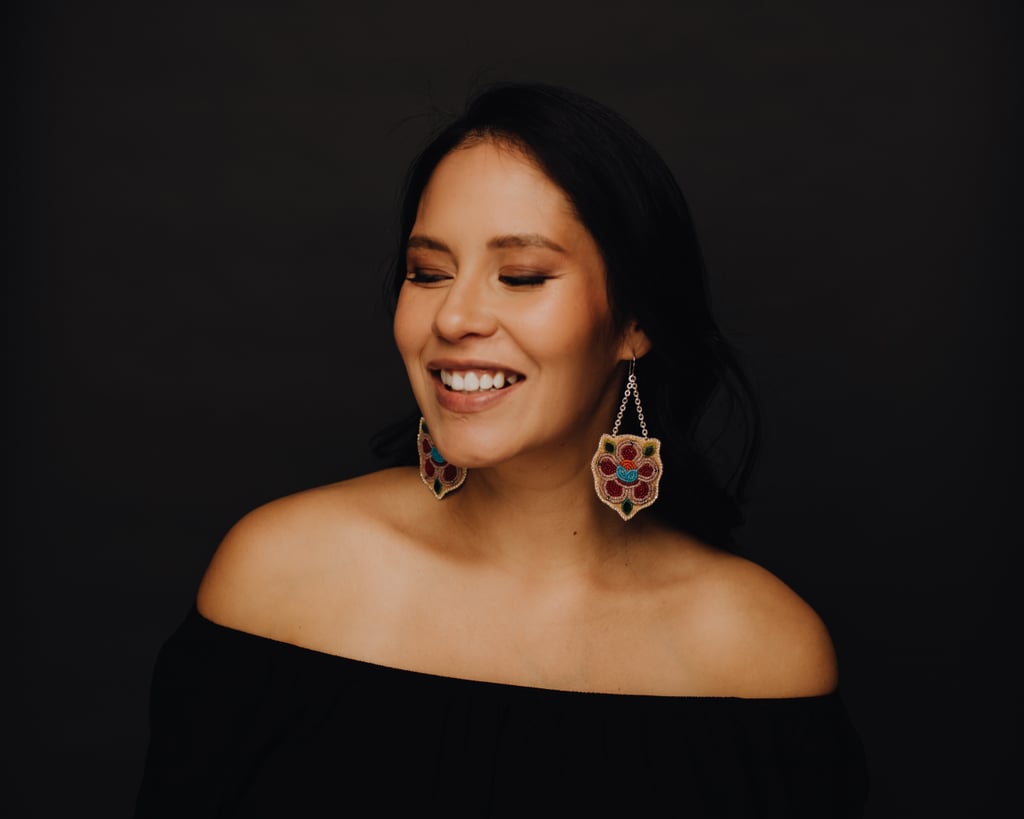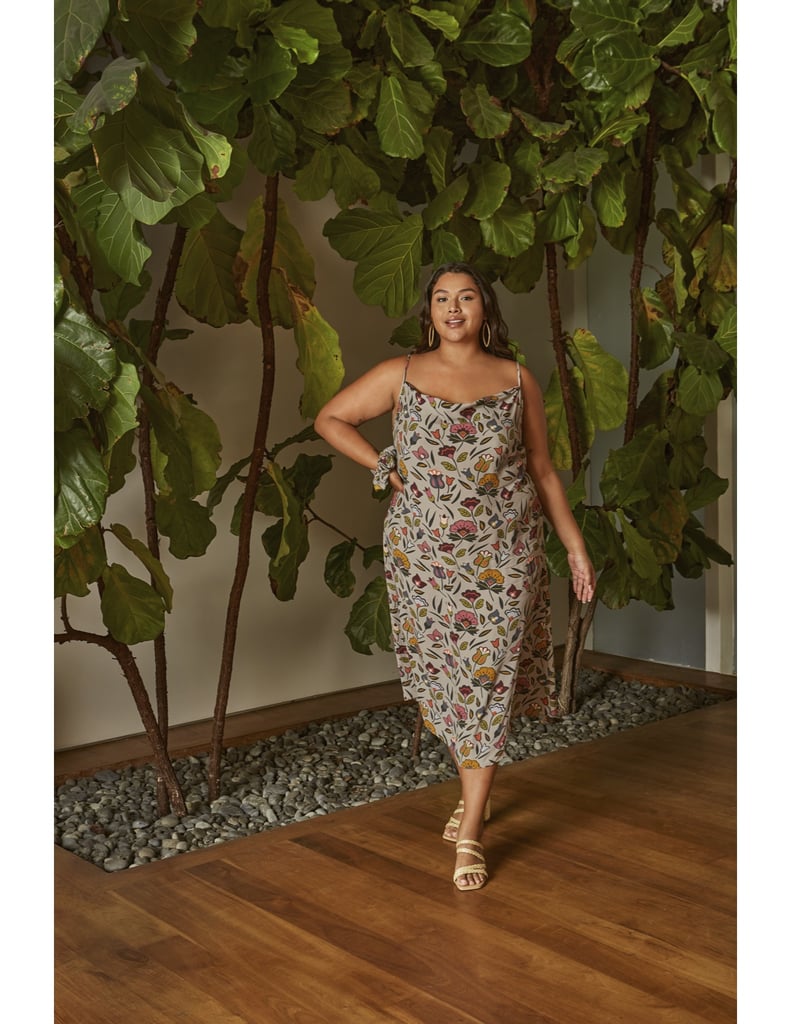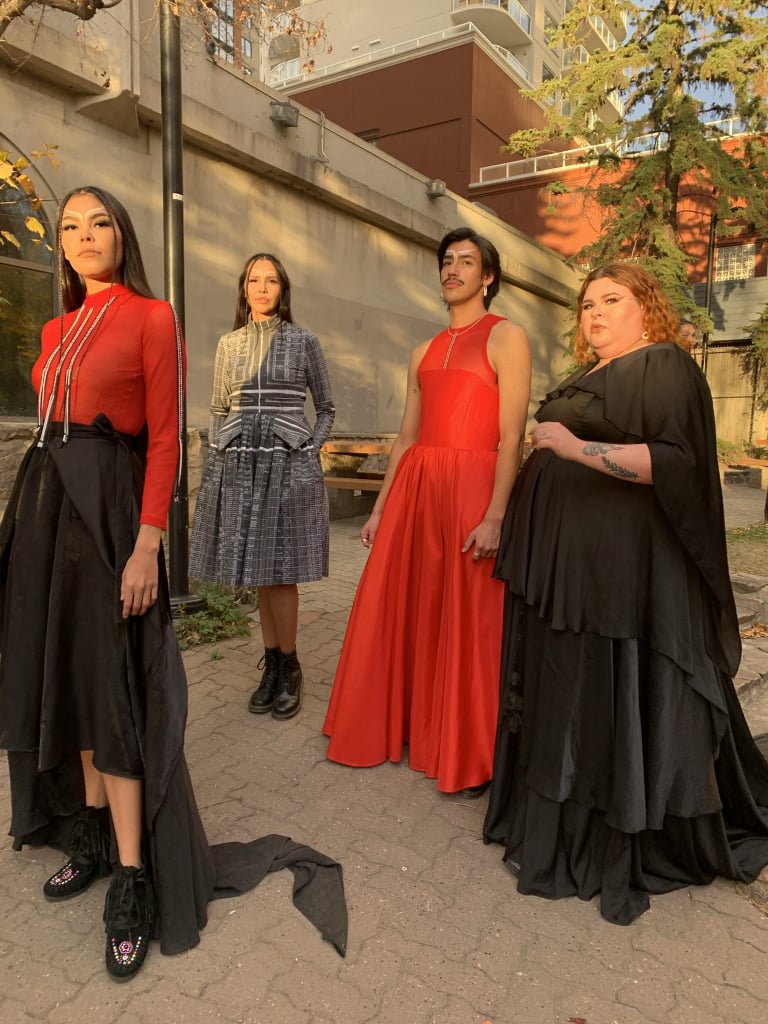Indigenous Peoples' Day is officially October 9, but the time to amplify indigenous designers is year-round. With that in mind, we're highlighting some rising artists whose designs are deeply rooted in storytelling and sustainability. Purchasing a piece directly from these brands ensures these designers can properly own their narrative and share the story behind each piece, from the unique materials used to the craft practices of their respective lineage.
"For far too long, Native designs have been appropriated by the fashion industry and oftentimes without involving our voices or benefitting any of our communities," Bethany Yellowtail, the designer behind B.Yellowtail, said. "When you make the choice to purchase directly from Indigenous creatives, you are investing in our people, our families, and most importantly supporting the continuation of our culture — without the appropriation."
Sustainability and respect for the Earth are also at the forefront of Indigenous brands as they prioritize creating small batches, utilizing recycled materials, and producing one-of-a-kind or made-to-order pieces. These brands are quickly gaining name recognition in various ways. One avenue is the growing success of events like Indigenous Fashion Week in Toronto [1] and Yaamava' Fashion Daze at the Yaamava' Resort & Casino [2] in Highland, CA, created to honor the richness of Native American style and culture.
These labels are also being amplified on the red carpet by celebrities like Amber Midthunder [3] who loves to wear Jamie Okuma among others and Quannah Chasinghorse [4] who gravitates toward designs by Red Berry Woman.
Keep scrolling to learn more about these standout indigenous brands — some in the designers' own words.
Jennifer Younger
With roots in the Southeast Alaska town of Yakutat, Jennifer Younger [6] is Tlingit of the Eagle Kaagwaantaan clan and currently lives in Sitka, Alaska. For her handmade jewelry, Jennifer draws inspiration from such sources as traditional Tlingit formline designs and spruce root basket weaving patterns.
POPSUGAR: Tell us the story behind how your brand came to be.
Jennifer Younger: My brand came to be when I decided that I wanted to do something to honor my grandmother who wasn't allowed to practice her Native American culture. I started my jewelry line, Jennifer Younger Designs [7], 11 years ago. When people wear my jewelry, I want them to feel strong and empowered.
PS: What's the inspiration behind your latest collection?
JY: The collection I showed at Yaamava' Fashion Daze is inspired by monogrammed ovoids. An ovoid is a feature unique to Northwest Coast art. Ovoids are used to portray a creature's eyes and joints, and sometimes teeth or orifices like nostrils and ears. Because ovoids aren't mainstream, this collection is intended to promote Native American design and increase its popularity outside of the Northwest United States.
PS: How does your culture inform your design process and your brand as a whole?
JY: Although the world is my oyster and I am free to create whatever I want, I always keep my elders in mind and design something that would make them proud. The basis of every piece of wearable art that I design has tradition and heart behind it, while paying tribute to my tribe's ancestors.
PS: It's like picking a favorite child, but do you have any favorites from your line?
JY: My favorite piece from the monogrammed ovid collection is the copper shield. It represents stature, wealth and protection. A key element of this design is this little "T" that represents the backbone of my Tlingit ancestors.
PS: What have been the most valuable lessons you've learned in launching your own brand?
JY: Hustle every day. People say "oh you're so lucky, you work for yourself" and what they don't realize is how much dedication it takes to run your own business and be your own boss.
PS: Where would you like to be a year from now? Five years from now?
JY: Since I am now achieving the goal of showing my collections in my own fashion show, I'd love to continue to do more runway shows and continue to build out my customer base beyond the Pacific Northwest. I also want to design even bigger, bolder pieces.
Jamie Okuma
Jamie Okuma [8] is Luiseño, Shoshone-Bannock, Wailaki, and Okinawan and is also an enrolled member of the La Jolla band of Indians in Southern California, where she lives and works. She specializes in one-of-a-kind pieces that she exclusively handcrafts, while also designing ready-to-wear fashions.
POPSUGAR: Tell us the story behind how your brand came to be.
Jamie Okuma: I am not a fan of the term "brand." I am an artist. I think there is a big difference between being a brand and an artist. I want my customer base and anyone who appreciates my work to understand that I am a one-person show right now and my designs are very personal to me. My work is a reflection of me and where I am at in my fashion career - so I am not quite a brand, but instead an artist.
I got my start designing at 5 years old. I went to my first powwow on my grandmother's reservation, and it was life changing. I remember what I was wearing and observing all of the beauty in everyone's outfits. Ever since that pivotal day, I have been inspired by Native American fashion.
PS: How does your culture inform your design process?
JO: My culture inspires everything. Each line I design is a reflection of my life and is closely tied to my Indigenous culture.
PS: How do you want people to feel when they wear your clothes?
JO: When people wear my clothes, I want them to feel beautiful and confident.
PS: What have been the most valuable lessons you've learned in launching your own brand?
JO: The most valuable lesson learned is that you cannot be afraid of any time of failure. You must embrace the entire process. Being an entrepreneur and independent designer has a multitude of challenges. There will be times that you'll doubt yourself and the process, but you must push through and trust that these complications and hurdles will get you to where you need to be.
PS: Where would you like to be a year from now? Five years from now?
JO: In a year from now and five years from now, I'd like to be doing exactly this - showing my designs in fashion shows across the country and in front of new audiences who aren't previously familiar with my work. In terms of growing my business, I have seen so much success from my e-commerce store that I will continue to run that as my primary way to reach customers and I don't have plans to open a flagship store yet.
Lesley Hampton
"I use my portfolio as a catalyst to define my identity, to explore my journey of reconnection, and champion diversity and authentic representation in fashion and media. I hope to aid in decolonizing Eurocentric standards in the fashion industry and inspire the next generation to create and take up space to empower themselves and their communities." — Lesley Hampton [9]
EMME Studio
EMME Studio [10] is a New York-based clothing and accessory brand founded by Korina Emmerich. Originally from the Pacific Northwest, her colorful work is known to reflect her patrilineal Indigenous heritage from the Coast Salish Territory, Puyallup tribe. Her brand has a strong focus on social and climate justice while speaking out about industry responsibility and accountability.
Tania Larsson
"I create Gwich'in Fine Jewellery using materials from the land. My jewelry is a conduit that creates connections between the land, animals, elders, hunters, community members, and the wearer. Processing the materials used in my jewelry is as important as the finished product itself. Revitalizing our traditional practices such as tanning hides, sewing, tool making, and storytelling are pillars of my brand. When I design jewelry, I envision my clients holding their head an inch taller when they walk out to face the world. My jewelry creates a sensory experience that is grounding. When you catch the scent of smoked hide from your earrings or when you run your finger on the tufted caribou hair, your senses recollect those ancestral memories that are inherent in us as Indigenous people." — Tania Larsson [11]
Keri Ataumbi, Ataumbi Metals
"We are all related. Every being that lives on this planet from the regenerative fungus or 'scary' insect to the fanciest, most well-dressed powerful person has a relationship to each other. The separation between us and the environment that sustains us is at a critical point. What is more important? The clean air and water that sustains a humble yet highly important bee or the destructive history both environmental and human that allows us to adorn ourselves with gold and other earthly treasures deemed valuable by humans? My work is handmade using 100 percent recycled metals and fair-trade stones. I hope that my pieces encourage you to become more aware of your beauty and your connection within our shared environment." — Keri Ataumbi, Ataumbi Metals [12]
B.Yellowtail
"The mission of B.Yellowtail and the Collective is to share authentic Indigenous design and beauty with the world, while prioritizing economic opportunities for our people. The entrepreneurial spirit of our people is vast, and we are committed to amplifying their voices, creativity, and carving out sustainable economic opportunities we desire to see in the world." — Bethany Yellowtail [13]
Evan Ducharme
Evan Ducharme [14] is Metis from the community of St. Ambroise, Manitoba (Treaty 1 Territory) with ancestral ties to the Cree, Ojibwe, and Saulteaux people. His work examines Metis history and its cultural iconography in dialogue with subversion of colonial notions of gender, queerness, and relations to place. With ancestral and contemporary Metis knowledge, Ducharme aims to affirm a contemporary representation of Indigenous people within the fashion medium.
Ginew
Ginew [15] (Gih-noo) is the only Native American-owned denim brand. They incorporate their Ojibwe, Oneida, and Mohican heritage to express a contemporary Native American voice through their premium apparel and accessories. The Facing East design is a new collaboration with Dyani White Hawk and woven in Native America by @pendletonwm.
"Our sun rises in the east. The Facing East blanket acknowledges ways that Lakota, and other Indigenous people, honor, and express gratitude for the gift of each new day. Embedded within this act of gratitude is a deep respect for, and appreciation of the many cycles and relationships that support life." — Dyani White Hawk, Ginew [16]
Photo and collaborator: @ginew_usa [17], @elcuad [18], @dwhitehawk [19], model @acosia_ [20]
4KINSHIP
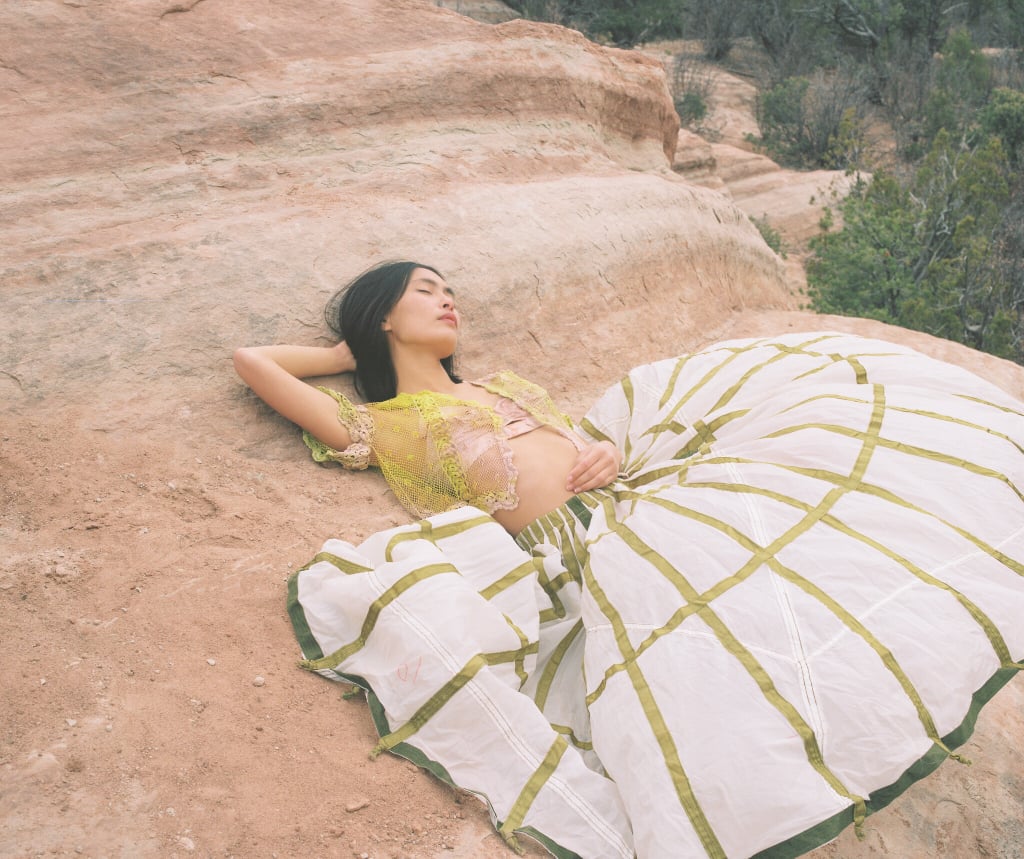
"4KINSHIP is an Indigenous-owned, sustainable, upcycling artwear brand based in New Mexico. I believe in sustainable design processes — revitalizing and reimagining vintage, creating lovingly upcycled textiles. Inviting old-soul textiles back into our world with love, care, and mindfulness. My ethics are built upon not only sustainable processes in fashion, but also to create sustainable solutions for future generations. 4KINSHIP was founded in 2015 fueled by a desire to produce clothing in a sustainable way and to honor my Indigeneity and be of service to commUNITY. In 2019, I relocated to New Mexico to reintegrate with my Diné tribe shortly before the pandemic hit, and I spent 2020 providing mutual aid relief for relatives on Navajo Nation. 4KINSHIP is currently leading fundraising efforts for Diné Skate Garden Project [21], which supports the community of Two Grey Hills/Toadlena on Navajo Nation by providing a transformative space for Diné youth in this remote area, with groundbreaking scheduled for spring 2022. You can learn more how you can support this initiative by texting GOSKATE to 707070." — Amy Denet Deal, 4KINSHIP [22]

